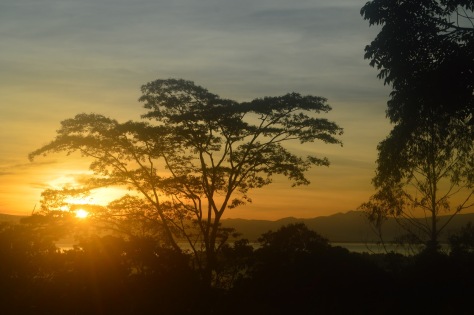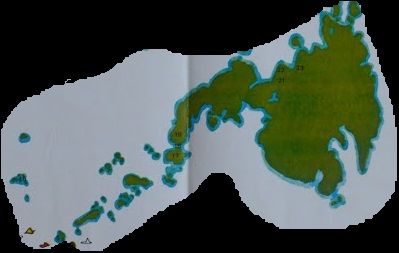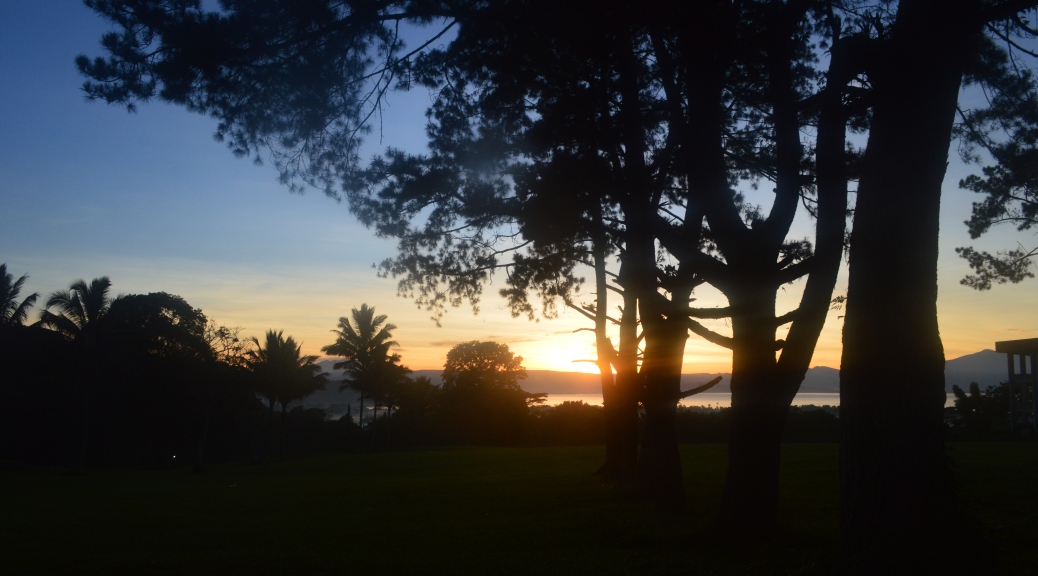CULTURE OF PEACE We Live…

The seed of human conflict and violence sow in Adam’s time when Cain struck and killed his younger brother Abel out of envy and jealousy as their God chose the sacrificial offerings of the latter. Thousand years passed, “conflict and violence” has been the inevitable hindrance preventing to win the lasting peace. In the Philippines, the experience of conflict and violence has been part of history for hundred years since Spain’s colonial era. But, as of this writing, the so-called Mindanao Conflict has become a none ending struggle for the both Muslims, Christians, Lumads and other tribes. Many intellectuals had been attempting and persistently analyzing the problem, and scholarly framed peace resolutions to solve the cycle of conflicts. But through the years, the aim for peace seems vague and elusive. It was all nothing but just a black and white strained in a gray line.
Conflict in the Presence of Peace
We are all different (whether we like it or not). When people cannot tolerate one another morally, culturally, religiously and politically – conflict is sure to happen. In a flat world society of diverse differences, it is an inescapable reality to deal it within the course and flows of time.
Stipulated with the archaic disputed issue on the endless claim of ancestral domain among Muslim descendants and other Lumad tribes, war and violence becomes the sounding grounds of conflict escalated into real and physical battle. To mention, the besieged city in the central district of Marawi was completely an appalled to residues from the skirmished war between the government forces and the extreme rebels hoisting its ISIS banner to forcibly establish a caliphate state. The scuffling encounter all began around 2 o’clock at the height of peaceful busy afternoon on the 23rd of May 2017 while days near ahead approaching the observance of Ramadhan that awaited all Muslims to discern. In a blinked of seconds, it took more than 100 days of violent warring. It was an inordinate gory power play and a bloody power game display in between of who should remain the strongest and who should stands the mightiest to rule the front-line conurbation. In that dumbfounding presence of extremely violence, thousands of innocent people who lives in peace and whom only wanted to live peacefully were in outcry exodus and forced to flee from their homes in order to escape the trepidation. Many were trapped from their flats and undergrounds as the weapons whacked in over a crisscross directions while grunting in fears.
The people of Marawi felt disconsolate as they failed to protect the peace they sow and propagate over the years. In spite of the Islamic teachings of peace hinged to their religious belief, it failed to crackdown somebody else’s extreme ideologies of another principle whom happened to embrace (quite) the same belief. For me, city that is for Bangsamoro taking over by another faction of extreme Bangsamoro revolutionaries is not ideally Islamic. Hence, it arises grueling and exhausting conflict if with a differing principles and concepts of implementing peace clash out of context. But it happened…
The presence of peace center institute and other various peace groups and young organizations were certainly disheartened and feel depressed by the abrupt eruption of war. All were burn into ashes in the fires of human-made hell. From internal conflict to grave violence certainly destroy the lasting peace they envision and hope for to attain of.
And, the fact remain that many were internally displaced. It further harmed by the realities of aggravating negative judgement and rejections. Thinking and treating each other differently came to play. It created an obscure wall of prejudices. It lead to a sheer suspicions and distrusts. It drew an invisible partition line to discriminate one another. It silently gave new birth to hatred and abhorrence and thus grow steadily.
Peace in the Presence of Conflict
The philosophy of culture of peace has always embedded with a struggle to impart its principles to the new generation. But its ideology remain resilient in the face of the immerging conflicting diverse society.
I was born and raised in Islamic of City Marawi as a Non-Muslim with parents both worked in military government. I took my formative years in the said place but peace education was not included in the formative mainstream curriculum to be taught at all levels in school from primary to secondary and even in tertiary (although there’s a specific subject offered for college students but remain an optional/elective). Though from GMRC (Good Morals and Right Conduct) to Values Education can be the key and can play a major role in shaping the morals of a child into fine conduct such as the value of respect, the concept of peace was not formally introduce in the school system to prepare the perceptive learning keenness of ‘schoolers’. In my opinion, it’s ironic to think (at that time) for a Laboratory School designed to mold a diverse people with different cultural affinity and ethnicity to come together, and by its goal, to understand each other and yet no mainstream form of peace education being taught…
Christians and other non-Muslims were considered minorities in the turf of the so-called minority groups in the Philippines. It comprise more or less 10 percent within the particular whole. Both in school and in the community, we strive living together harmoniously and peacefully. Just like in an ordinary normal goings in a society, we tend to follow the nature of system in sharing both our religious beliefs and our cultural and ethnic practices in the hopes to reconcile the common grounds of finding ourselves to live in “peace”.
Just like in a normal Filipino society, thus, we observed the norms of behavior. To recall, as growing preschoolers and primary pupils then, we were taught in school the basic knowledge on learning the basic foundation of education but again, none specific mainstream design for peace education. With this thought system, we were naturally inclined to embrace competitions to one another. A healthy-competition (they say). Though, we study together, play games together (the usual way), and sometimes share our snacks and foods together, yet our hesitations of asking both our differences remain in our thoughts as well as our judgement about what kind of people they are to us and inversely what kind of people we are to them. Asking parents the “abouts” of them were our last hitting grounds. But the basic concepts of “who and what they are” were not as the same as the other one. Partly, parents were also bombarded with mixed notions and dissimilar impressions. But mostly were negative connotations towards them and other. These lead children to think contrarily. Such difference build barriers of divisiveness come to form stereotyping. It creates conflicting issues both positive and negative that potentially polarizes the thoughts of learning. In some instances that we were involved in an irreconcilable issues, and sometimes engaged in fist fights, we tend to sow a growing hatred in the minds and hearts with one another even if it was resolved then. It develop prejudices. It cultivates a perceptive discriminatory thoughts. And this could potentially lead to misunderstanding. Worst is into violence. Thus, in spite of the presence of peace, conflict thoughts rule the human psyche.
The Challenge to Culture of Peace
he so-called Mindanao Conflict has been handed down from generations to generation. And that Lasting Peace is everyone’s hope to achieve. However, obviously, it has not been completely resolved and still far from real. Peace maybe sound so elusive but even in its slightest possibility, it is hard to kill. But sustaining the culture of peace is financially exhausting. And, it’s quite expensive to fill its concordance. That’s for real. Yes, the intervention of the government is essential by institutionalizing peace inititives and the needs of the people toward progress and sustaining development. But the interference of these frameworks being laid and mounted upon is just a half-part of the whole. That, the work of the “other half” and its success depends on the people on how they will protect and sustain it. Would that be enough? Will it really work?
The issue of political practices is undoubtedly an enormous hindrance in implementing the plans and programs of peace towards development. The mere fact that the leaders and people behind the traditional politics are hounded with issues of power hunger and corruption that aggravates the problem of unabated social injustices. It’s a receding abortive factor that could principally precede unsuccessful endeavor towards progress. And, that even with the great efforts of attaining its goal and purpose for lasting peace, everything that is being work hard for in achieving it will just be futile, put into shame and in vain (sayang lang)…
Moreover, the growing community in social media network continuously intoxicate the perceptive views of the “netizens“. Irresponsible use and or overuse trends and tend to be the leading factors in spreading fake news and lies, thus, takes over the consciousness of an individual being. Disinformation and misinformation creates more avenues to think and ruminate differently with others. It disintegrate people to people rapport. Its relationship slopes downward as social media like Facebook and the likes has become the annex virtual sphere where most people spent more time often with than in the realm. Thus, creates “cybernetic culture” where the essence of realism turn to “Animeism”.
I got awareness on the idea of peace from joining and engaging myself through interfaith dialogue groups and movements. And it’s quite a humbling and fulfilling experience. Yet, it was a roller coaster journey ride. To say the least, working for peace is always confederated with great challenges. I was once there, idealistic then. The struggle to make a difference for peace is real. The longer we give effort, peace seems hard to grasp and easily slip away on our hands. It was tough and tiring yet challenging enough to tolerate and endure the hardships and disappointments while sustaining the momentum of your commitment to peace. Even for a certain group’s internal relationship also crosses and clouded with conflicting issues due to its gainsaying views and differences. That’s for sure. But the value of respect prevails of both parties involved, which is quite another challenge and relatively a test of friendship, amity and alliance. But above all, the possibility of attaining true peace and justice is firm, unwavering, contemporarily existing and doable or feasible. It is real, though a continuing process.
With the looming biases and prejudices, issues on discrimination and abuse of power from the remnants of the war in Marawi City, there’s again, a clarion call to give peace a chance. It’s an expensive move yet very indispensable. Peace groups and social justice movements can play a significant role in molding people whom dealing with struggles of conflict in grassroots level. It’s not about spending astronomical amount of money, it’s all about responding to the problem by means of resolving conflict effectively and in a non-violent way. Talk estimation or exchanges of opinion is important but enclose with actions, thus, vital and essential. Be it in an innovative approach and or in creative means through sports, arts, music, community service, street education, empowerment and social awareness, and etc. teaching peace can make a difference in building a more peaceful and harmonious community. Burning their biases and prejudicial outlooks, melting down their perceptive discriminating thoughts, and giving them the right tools on dealing the issue of power struggle can simply build a society of culture of peace. It can shapes perception, it changes things toward positive life as it works for everyone else’s who needs it. Intensive yet practical approach of education is crucial in transforming the issues of human psyche from inner conflict to inner peace. As to how, it remains a challenge. The possibility is limitless.
But still the reality constantly linger – that peace and conflict is inseparable. Both always come together. You and I knows that, because we personally have our own conflicting issues and (dark) stories within. Day by day, we are dealing with it, confronting it. And, at times difficult to bear and endure with. Thus, peace is susceptible to conflict because of individual’s own sufferings and other’s differences with underlying own sufferings as well. On the other hand, it is a mistake to avoid conflict because conflict per se opens an avenue to challenge the problems and struggles toward positive change. It gives an opportunity in learning more about yourself as well as others too. Hence, peace and conflict intertwined in between and come in both ends.

-end-
From the Blogger’s Desk: ” Please note that I am no longer connected or affiliated to any peace movements or any existing civic organizations related to peace advocacy. The intention of this blog post is for personal purposes only. Some of the photos above were grabbed from the news letter of a sponsored international organization I was once involved with. Thank you
